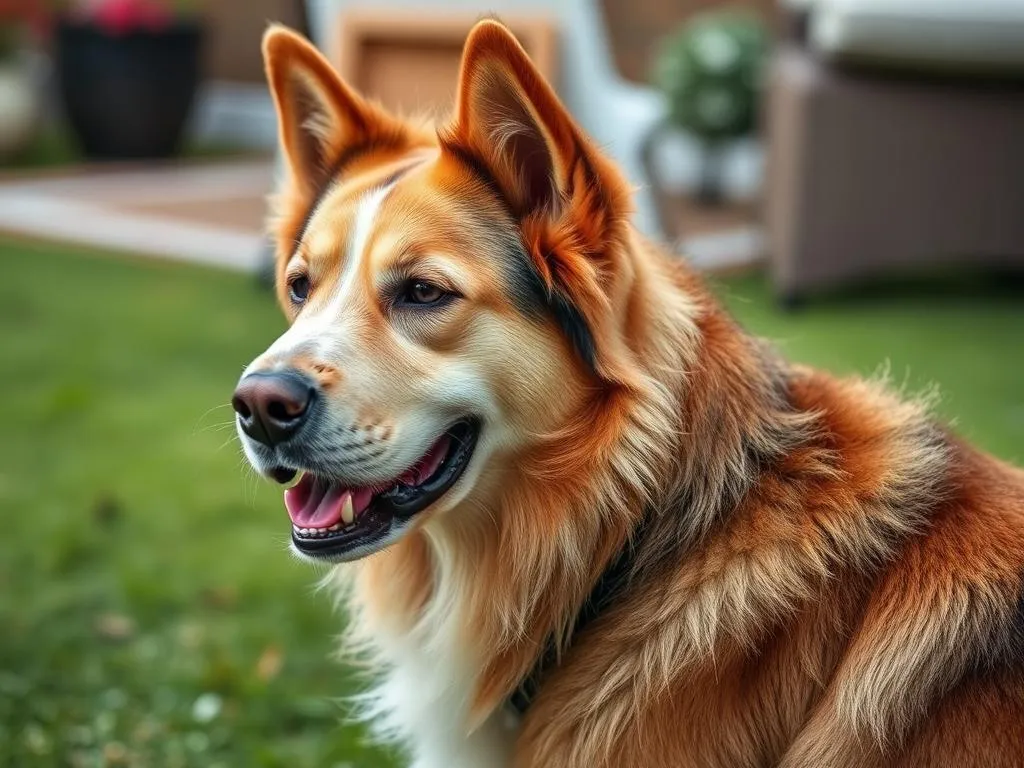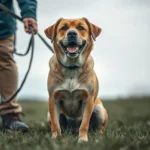
Introduction
As a dog owner, welcoming guests into your home can sometimes feel like a daunting task. Many dogs become overly excited or anxious when new people arrive, leading to chaotic situations that can be stressful for both the dog and the guests. Understanding how to keep your dog calm when guests arrive is crucial not only for creating a pleasant atmosphere but also for ensuring that your furry friend feels secure and comfortable.
In this article, we will explore effective strategies for managing your dog’s behavior during guest visits. From understanding canine behavior to employing specific training techniques, we will provide a comprehensive guide to help you and your dog navigate these social situations with ease.
Understanding Canine Behavior
The Nature of Dogs
To effectively manage your dog’s excitement, it’s essential to recognize that dogs are naturally social creatures with a strong pack mentality. They thrive on interaction and often react strongly to changes in their environment, especially when unfamiliar people enter their space. This behavior is rooted in their instinct to assess new members of their pack.
When guests arrive, your dog may perceive them as part of their pack or as potential threats. This can lead to various reactions, from jumping and barking to hiding and retreating. Understanding this underlying nature of dogs is the first step in learning how to keep your dog calm when guests arrive.
Common Triggers for Excitability
Identifying the specific triggers that cause your dog to become excited is crucial for implementing effective strategies. Common triggers include:
- Doorbell: The sound can signal an imminent visitor, causing your dog to react instinctively.
- Unfamiliar Scents: New guests bring unfamiliar smells, which can heighten your dog’s curiosity and energy levels.
- New People: The presence of strangers can be overwhelming for some dogs, especially if they are not used to socializing with others.
Additionally, certain breeds may have heightened tendencies toward excitability, making it essential to consider your dog’s specific characteristics when planning your approach.
Preparing Your Dog for Guests
Pre-Visit Training Techniques
Before your guests arrive, it’s beneficial to reinforce basic commands that can help manage your dog’s behavior. Teaching your dog to sit, stay, and down are fundamental skills that provide a solid foundation for controlling excitement.
Another effective technique is desensitization to sounds like the doorbell. You can practice this by ringing the doorbell while rewarding your dog for remaining calm. Over time, your dog will associate the doorbell sound with positive experiences, reducing their excitement when it rings during an actual visit.
Creating a Calm Environment
Establishing a calm environment is another key strategy for ensuring a peaceful visit. Designate a specific area in your home for your dog during guest visits. This space should be comfortable and filled with familiar items, such as their bed, toys, and water.
Consider using calming scents, such as lavender, which can help soothe your dog’s nerves. Additionally, playing soft, calming music can create a peaceful atmosphere that encourages relaxation.
Establishing a Routine
Consistency is vital when preparing your dog for guests. Maintain a regular feeding and exercise schedule leading up to the visit. A well-exercised dog is less likely to have excess energy that can contribute to excitement during the arrival of guests.
Gradual exposure to guests in a controlled environment can also be beneficial. Start by inviting friends over who your dog is familiar with, allowing them to interact in a positive manner before introducing new guests.
Training Techniques for Calmness
Positive Reinforcement
Using positive reinforcement is one of the most effective ways to encourage calm behavior in your dog. Reward your dog with treats, praise, or affection when they exhibit desired behaviors, such as remaining calm during guest arrivals.
For example, when your dog successfully stays in their designated area as guests enter, offer a treat or verbal praise. This reinforces the behavior and encourages your dog to repeat it in the future.
Using Commands Effectively
Teaching specific commands for guest interactions can dramatically improve your dog’s behavior. Here’s a step-by-step guide to implementing this training:
- Choose a Command: Select a simple command like “place” or “go to your spot.”
- Practice in a Quiet Environment: Begin training in a distraction-free area, rewarding your dog for following the command.
- Gradually Introduce Distractions: Once your dog reliably follows the command, gradually introduce distractions, like the sound of the doorbell or the presence of a friend.
- Practice with Guests: When guests arrive, have them enter the home while encouraging your dog to follow the command.
Real-life examples of success can be inspiring. A dog that previously jumped on guests may learn to go to their designated spot when the doorbell rings, allowing for a more controlled and calm introduction.
Redirecting Energy
Before guests arrive, engage your dog in activities that redirect their energy. Play fetch, take a brisk walk, or use interactive toys that require mental stimulation.
Incorporating puzzle toys or treat-dispensing games can also keep your dog occupied and mentally engaged, reducing the likelihood of pent-up energy when guests arrive.
During the Guest Arrival
Managing Excitement
As guests arrive, it’s important to manage your dog’s excitement effectively. Keep your dog on a leash or in their designated area as guests come in. This helps prevent jumping or barking while allowing for a more controlled introduction.
Consider having toys or chew items available to keep your dog occupied during the initial arrival phase. This strategy can help redirect their focus away from the guests and onto something more calming.
Introducing the Dog to Guests
When it’s time to introduce your dog to guests, do so in a calm and controlled manner. Allow your dog to approach guests at their own pace, rather than forcing interaction. This encourages your dog to feel safe and reduces anxiety.
Instruct your guests to remain calm and avoid sudden movements. Encouraging them to ignore the dog initially can help your dog feel more relaxed and secure as they assess the new people in their environment.
Maintaining a Calm Atmosphere
Guests should be mindful of their behavior as well. Calm body language and a soothing voice can significantly impact how your dog feels during the visit. Encourage guests to avoid loud greetings or rapid movements, which can exacerbate anxiety in your dog.
Remind guests to interact with your dog in a way that respects their space; allowing your dog to approach them rather than the other way around can make a substantial difference in their comfort level.
Post-Visit Strategies
Reinforcement of Calm Behavior
After guests leave, it’s important to reinforce your dog’s calm behavior. Offer praise and treats for remaining composed during the visit. This positive reinforcement helps solidify the desired behavior for future interactions.
Maintaining a consistent routine following the visit can also aid in calming your dog. A familiar routine will help your dog transition back to their normal state, reducing any lingering excitement or anxiety.
Evaluating Behavior for Future Visits
Take the time to observe your dog’s behavior during and after guest visits. Noting any patterns or specific triggers can inform your approach for future interactions. Keeping a journal of your dog’s reactions can help you determine what strategies work best and where adjustments may be needed.
Additional Tips and Resources
Professional Help
If your dog consistently struggles with excitement around guests, it may be beneficial to consult with a professional dog trainer or behaviorist. They can offer tailored strategies to address your dog’s specific needs and help you implement effective training practices.
Recommended Reading and Tools
Consider exploring additional resources to deepen your understanding of dog behavior and training. Books and websites that focus on positive reinforcement techniques can provide valuable insights. Additionally, training apps and gadgets may assist you in tracking your dog’s progress.
Conclusion
In summary, learning how to keep your dog calm when guests arrive involves a combination of understanding canine behavior, implementing effective training techniques, and creating a tranquil environment. By taking proactive measures and maintaining consistency, you can help your dog feel secure and relaxed during social visits.
Remember to practice patience as you work with your dog; every pet is unique, and it may take time for them to adjust to new experiences. We encourage you to share your experiences and tips in the comments, as your insights may help fellow dog owners navigate similar challenges. With dedication and love, you can foster a harmonious environment for both your dog and your guests.









